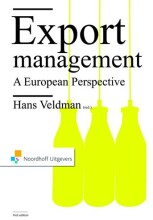Exporting, a structural approach - The Perlmutter theory and the process of internationalization
6 important questions on Exporting, a structural approach - The Perlmutter theory and the process of internationalization
According to Perlmutter there are four types of company, each with a distinct culture of internationalization:
- The ethnocentric company - (richtend op thuisland)
- The polycentric company - (uitgaande van internationale handel)
- The regionally centred company - (uitgaande van internationale handel)
- The Geocentric company - (wereldwijde benadering)
How does Perlmutter see the entire process of internationalization?
What is the marketing policy?
- Higher grades + faster learning
- Never study anything twice
- 100% sure, 100% understanding
What does the choice of routes to internationalization - either via advantages in costs (global marketing) or through adjustment of market requirements (glocal marketing) - depends on?
What are the main motives for internationalization?
- Company's objectives
- Interest in continuity (spreading sales risk)
- Positive profit expectations in foreign markets
- Growth (diversification on the basis of Ansoff's growth model) - Growth in turnover
- Domestic market is too small - Human resources
- Considerations concerning following customers that have gone abroad
- Situational considerations (macro motive)
- Considerations of competition (macro/ micro motive)
According to Kotler, what are the characteristics of a SBU?
- It is active in one market or in a number of closely related markets
- It competes with a clearly defined group of competitors
- It has its own manager, who is responsible for strategic planning and who has his own responsibility in respect of profit
- It is active in a number of closely related international markets (regions) or in a clearly foreign market
The question on the page originate from the summary of the following study material:
- A unique study and practice tool
- Never study anything twice again
- Get the grades you hope for
- 100% sure, 100% understanding
































